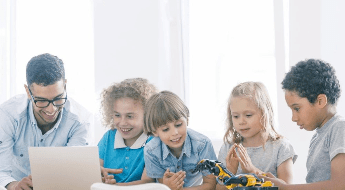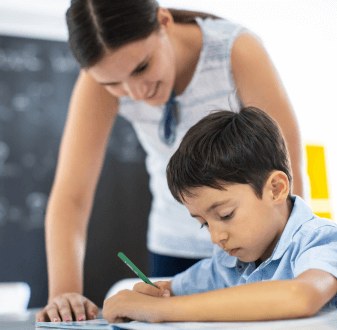“What people contribute to the world around them has everything to do with how they engage with the world within them.”No longer just the ‘optional elective’, or ‘playtime for small children’; creativity in the classroom has taken on a whole new status, thanks to the findings of twenty-first-century neuroscience.
― Ken Robinson, Author of Creative Schools: The Grassroots Revolution That’s Transforming Education
We’re now beginning to understand the ways in which creative thinking is central to all kinds of growth. The importance of creativity goes far beyond the practice of music or painting, although these activities do have proven benefits for cognitive development and stress relief.
Creativity is about using the imagination to solve problems, experiment, enquire about the world and develop original ideas. It’s essential to all individual and social progress.

It’s also becoming highly valued, in a global economy increasingly driven by innovation and tech start-ups. A 2010 survey of over 1,500 executives found that creativity is now valued as the most important business skill in the modern world.
Education institutions are also following suit. Torrens University now offers a Masters in Education (Innovation and Change), which teaches design theory and the creative process in order to introduce innovation in schools.
If improved mental health, cognitive development, workforce demand and social progress aren’t reasons enough to have more creativity in the classroom, there are still a few to consider.
Creativity in learning is demonstrated to engage students’ attention, encourage confidence, foster critical thinking and deliver better learning outcomes. Plus, introducing more creative approaches into your class allows you as a teacher to engage with students as diverse individuals, and to practice creative teaching, yourself.
Here are 9 ways you can start firing up creativity in your classroom
1. Start a notebook project
Notebooks are the cornerstones of creativity. Having students write, draw, or doodle in blank notebooks for just a little time each day gives them the freedom to be lost in their ideas without judgement.
2. Introduce fun, theoretical ‘real world’ problems for group solving
These kinds of ‘STEM’ problems are shown to have huge benefits in training the mind to think critically and creatively. It’s a great way to fire up their imaginations and engage and empower them.
3. Set them up for failure
No joke. One of the greatest obstacles to creativity is the fear of failure, but this is a fear that can be overcome. By demonstrating that it’s not shameful to fail in front of others, and practising activities allowing failure in a safe space, you will teach your students a lasting lesson that will allow them to thrive.
4. Go into nature, set challenges and ban devices
Science Daily recently published a study by the University of Utah, showing a significant increase in the ‘creativity score’ of participants after just a four-day hike with no devices. Of course, you can’t take your class of seven-year-olds on a four-day hike. But, you can take them on the occasional excursion to a park, confiscate their phones, and challenge them to find five things starting with the letter ‘B’.
5. Join in the 100-Day Project
This is a global project encouraging people to do one creative thing every day for 100 days. You can participate as a whole class, do the activities together and count down the days. Have a party at the end!
6. Play music and chill
The benefits of learning to play music are well documented and vast. But did you know listening to music can also relieve stress as well as helping memory recall, and improving verbal intelligence? Why not play the Moonlight Sonata while everyone has a ten-minute lie-down, and let their imaginations carry them away
7. Play visualisation games
Linking ideas to pictures through mind mapping, info-graphics, or visual association exercises helps students make neurological connections between different parts of the brain.
8. Genius hour
It’s becoming more and more common for teachers to introduce an hour into the day where students are free to work on their own self-directed projects. They get to set themselves guided challenges and see the projects out to completion. It’s shown to foster creative problem solving and confidence, as well as help them figure out what it is that excites them personally.
9. Let’s talk about colours
As any three years old will testify, it is fun to play with colours. But, did you know that the research on colours in education shows they can affect learning, mood and even brain development in children?

Playing with and talking about colour is a great way to introduce the relationship between the visual world and abstract thought into the classroom. Why is blue gloomy? Why is yellow happy? You’ll start a weird and wonderful conversation.
It is the perfect time to bring innovation into your institution and lead the way for better teaching. With our Graduate Certificate and Master's courses in Education (Innovation and Change), you will be equipped with the most up-to-date tools and strategies for change-making. Learn about design thinking, new technologies and examining and interpreting data.
See here for more information about the unique Graduate Certificate of Education (Innovation and Change) and start bringing innovation and creativity to your school today!



